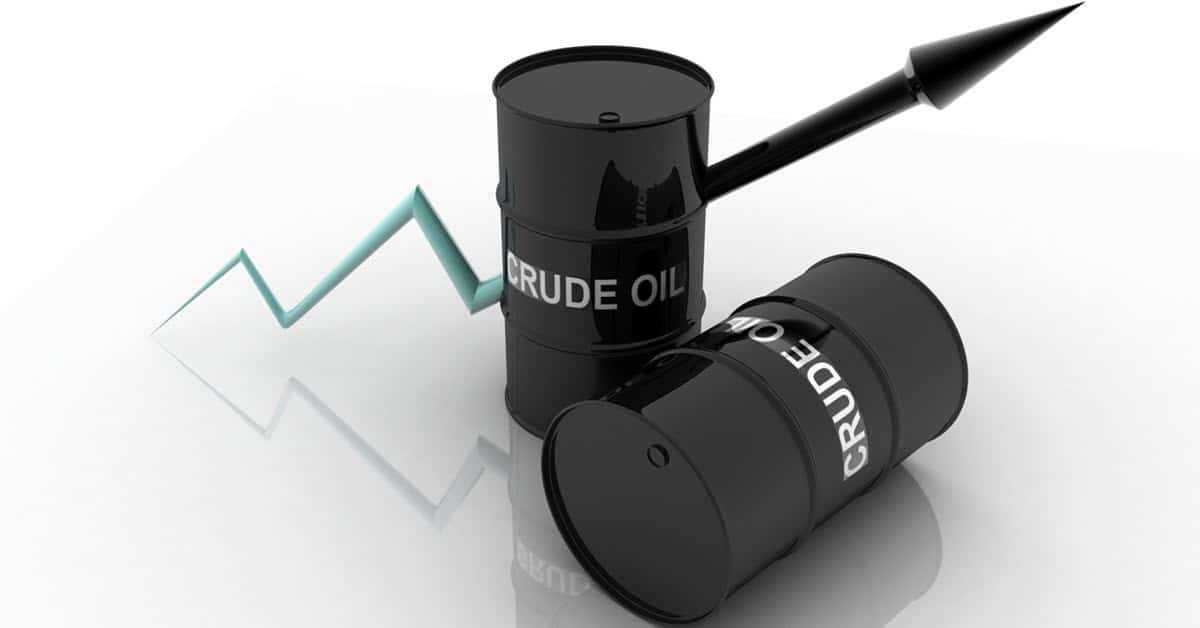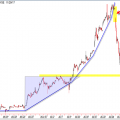The U.S. WTI Crude prices have escalated to the highest since August 2022, breaking the $95 per barrel resistance level. The international benchmark, Brent Crude, has hit a new record for 2023, beating $97 per barrel.
However, crude oil prices faced significant drops. Brent Crude decreased by nearly 12%, while WTI declined by almost 9%. The sudden crash was instigated by a report from the Energy Information Administration (EIA) citing weak U.S. gasoline demand, resulting in an abrupt shift in market sentiment. Tensions were exacerbated further by a bond market selloff, stimulating concerns about the future of the global economy and oil demand.
Despite the reduction, price levels remain high, potentially instigating economic challenges for industries closely tied to the energy sector.
However, before delving into the implications for related industries, a discussion regarding the reasons behind these unprecedented oil price levels is crucial.
According to the global energy watchdog, the International Energy Agency’s (IEA) Oil Market Report (OMR), global oil demand remains on track to rise by 2.2 million b/d year-over-year to 101.8 million b/d in 2023, fueled by rejuvenated Chinese consumption and increasing demands for jet fuel and petrochemical feedstocks.
According to Standard Chartered commodity analysts’ data, the U.S. oil demand demonstrates resilience and outpaces previous forecasts – bolstering the assertion of burgeoning gasoline and jet fuel demands that align with household behavior patterns. The EIA projects an annual boost in initial gasoline demand of 98 kb/d.
Goldman Sachs predicts the persistent demand to culminate in a larger-than-anticipated deficit of up to 1.8 million bpd during the latter half of 2023 and a 600,000 bpd deficit in 2024.
Other factors influencing supply and demand dynamics revolve around OPEC+ and Russia’s orchestrated production cuts and extensive crude draws, suggesting a probable surge in oil prices. Unexpected supply disruptions from Angola, Libya, and Nigeria might enhance oil prices. These elements point to a robustly bullish forecast for the remainder of the year.
Industry analysts project the growing trend in oil prices to persist. Norwegian oil and gas firm Equinor’s chief economist anticipates global crude oil prices could reach $100 a barrel.
Data from the U.S. Energy Information Administration (EIA) unveils crude stocks at the Cushing, Oklahoma storage hub, which is the delivery point for U.S. crude futures, plunged by 943,000 barrels in the fourth week of September to less than 22 million barrels, the lowest since July 2022. This incited an energy price surge.
Although the oil prices have eased, they remain well above and potentially detrimental to numerous businesses. Industries such as air travel and cruise operators, which heavily rely on fuel derived from oil, bear the burden of these soaring prices. Potential consequences include less consumer travel due to escalating airline ticket prices, resulting in repercussions for businesses within the tourism sector. Additionally, profits may decline significantly for chemical companies that utilize large quantities of oil for products such as paint.
Therefore, investors may want to avoid the following three stocks until oil prices decrease more substantially:
DAL provides scheduled air transportation services for passengers and cargo in the U.S. and internationally.
Crude oil is the predominant raw material for jet fuels and the lifeblood of airplanes. Jet fuel expenses, one of the most significant expenses for airlines, account for 10% and 12% of airlines’ operating costs. Hence, elevated oil prices increase jet fuel costs and can significantly impact the profitability and cash flow of DAL and other similar airline operators.
High oil prices can coerce airlines to compensate by inflating ticket prices or incorporating supplementary charges. Therefore, the interest in air travel, particularly for discretionary and leisure trips, could dwindle, resulting in a decreasing demand.
DAL’s CEO Ed Bastian previously cautioned that elevated oil prices and increased government regulations could catalyze a surge in ticket prices.
Moreover, DAL is known for delivering high-quality service backed by well-trained staff and a customer-centric approach. The company’s commitment to uphold these standards and offer amenities inevitably influences ticket prices.
DAL’s oil refinery in Trainer, Pennsylvania, purchased in 2012, processes jet fuel, gasoline, and diesel. The airline company strategized to use this refinery as a hedge against fluctuating oil prices and costs related to jet fuel. However, the strategy was ineffective, as the refinery suffered losses amid maintenance challenges, pipeline disruptions, and unfavorable market conditions.
Moreover, as of June 30, 2023, DAL’s adjusted net debt stood at $19.84 billion, marking a 1.3% increase year-over-year.
Recently disclosed quality issues with RTX’s Pratt & Whitney engines are expected to impact the U.S. carrier moderately. The problem arose due to a powder metal defect that may cause cracks in some components of the engines. Despite an initial estimation by RTX of repair work lasting 60 days per engine, it is expected to take up to 300 days.
DAL has trimmed its third-quarter operating margin and profit forecasts as Russia and Saudi Arabia’s extended oil production cuts amplified the airline’s fuel expenditures. The carrier anticipates a third-quarter profit ranging from $1.85 to $2.05 per share, a drop from its earlier estimate of $2.20 to $2.50 per share.
Considering all these circumstances, it might be judicious to avoid DAL stock now.
Carnival Corporation & plc (CCL)
A leading provider of leisure travel services, CCL, operating a fleet of over 90 ships accessing nearly 700 ports, faces significant hindrances surrounding fuel costs due to rising crude oil prices. This scenario creates a negative backdrop for CCL and other cruise line operators, where the operational expense, mainly fuel, is expected to spike.
Passenger ticket surcharges are often a response to these inflationary trends. Considering this, CCL’s CEO, Josh Weinstein, indicated that a fuel surcharge is “certainly not off the table.” However, this move might trigger a plunge in demand for cruises, particularly with the end of “revenge travel” and grappling with increased inflation. Cruise operators could see their profitability significantly impacted due to burgeoning oil prices, resulting in a notable hit to CCL’s bottom line.
As of August 31, 2023, CCL’s debt (current and long-term) stood at $31.30 billion. Moreover, despite high-ticket pricing driving CCL into third-quarter profitability and narrowing its annual loss forecast, the company anticipates a larger-than-predicted fourth-quarter loss. The predicted net impact of $130 million from advanced fuel costs and unfavorable currency exchange rates could eliminate most of the third quarter’s ex-currency, ex-fuel $200 million outperformance.
Also, costs are projected to be further escalated by an assumed 18% rise in dry dock days for maintenance and repairs in 2024.
In 2024, the confluence of CCL taking ownership of three new vessels and a year marked by extensive maintenance could also add further financial strain. Despite potential offsets due to export credits, new capacity will lead to incremental costs and increased capital expenditures. Consequently, this surge in portfolio growth, together with the extended dry-dock days, would likely cut into the following year’s free cash flow, even with robust demand.
Given the likelihood of reduced profit margins and dwindling demand due to inflated prices, it may be prudent to approach CCL cautiously.
Based in Amsterdam, the Netherlands, AKZOY is a global producer and seller of paints and coatings.
A key component in their production process is crude oil, which creates various elements such as solvents, resins, pigments, additives, and binders. As per some estimates, crude oil derivatives constitute about 40% of the total raw materials required for paint production.
Certain petroleum-based components are indispensable for specific paints or applications, making their substitution challenging without affecting the paint’s quality or performance. A direct correlation exists between crude oil prices and the cost of manufacturing paint. Therefore, elevated crude oil prices present significant challenges to paint companies.
Increased oil prices increase the production costs for paint manufacturers, resulting in diminished profitability and growth opportunities for these companies.
Paint companies often transfer these costs to their customers to cope with inflated input costs. However, high prices can negatively affect paints’ demand and sales volume, especially in a fiercely competitive market.
AKZOY is experiencing this challenge, making it a potentially less attractive stock option. The company could suffer substantial negative impacts due to lower housing starts in the U.S. and Europe’s weak economic growth.
The company’s revenue dropped by 3.9% year-over-year in the second quarter of the year. Furthermore, the Net Debt/EBITDA or leverage ratio for the year’s first half increased to 4x, compared to 3.2x during the prior-year period. Higher oil prices are forecasted to decrease its operating income this quarter significantly.
Therefore, these stocks could be best avoided now.

